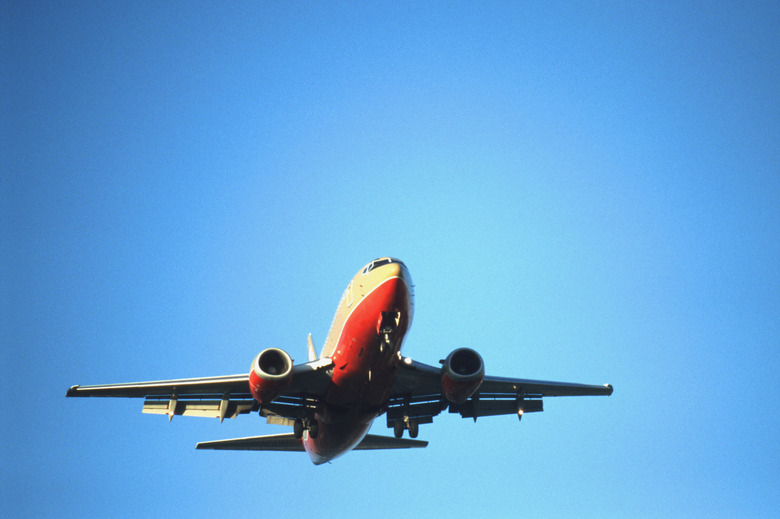How Do The Jet Streams Affect Flights?
Jet streams are strong westerly winds that blow in a narrow band in Earth's upper atmosphere at the same altitudes at which airplanes fly. They form because of temperature variations between the poles and equator, and they exist in both hemispheres, although those in the Northern Hemisphere are stronger. Airplanes flying eastward in a jet stream get a powerful boost, but those flying westward must fight an equally powerful headwind.
Location and Altitude
Location and Altitude
The two jet streams in each hemisphere are the result of air circulation in three distinct cells in each hemisphere. The tropical jet stream occurs at 30 degrees north/south latitude, at the interface of the Hadley cell — the one closest to the equator — and the mid-latitude Ferrell cell. The polar jet stream, which is the stronger of the two, occurs at 50 to 60 degrees north/south latitude, at the interface of the Ferrell cell and the Polar cell. The jet streams blow just below the tropopause, which is the boundary between the troposphere and the stratosphere. The altitude of the tropopause varies from 19,800 meters (65,000 feet) at the equator to 7,000 meters (23,000 feet) above the poles in winter.
Characteristics of Jet Streams
Characteristics of Jet Streams
Jet streams blow in narrow bands with widths of a few hundred miles and thicknesses of less than 3 miles. They typically average 160 to 240 kilometers per hour (100 to 150 miles per hour) in summer, and they can reach speeds of 400 kilometers per hour (250 miles per hour) in winter. They aren't fixed at a certain latitude; they meander from north to south depending on the time of year and the position of the sun. The fact that they blow from west to east is a consequence of Earth's west-to-east rotation combined with its north-south temperature gradients.
Aviation and the Jet Streams
Aviation and the Jet Streams
Commercial airline pilots have used jet streams since 1952, when a Pan Am flight flew from Tokyo to Honolulu at 25,000 feet in order to take advantage of one. By flying in a jet stream, planes traveling from west to east get a significant boost from the tailwind, which saves time and fuel. Conversely, planes flying in the opposite direction lose time and expend more fuel by flying into the headwind a jet stream produces, and pilots usually adjust their flying altitude to avoid them. The day-to-day fluctuations in the position, intensity and size of jet streams often necessitate last-minute flight plan modifications before a long-distance flight takes off in the middle latitudes.
Jet Streams Cause Turbulence
Jet Streams Cause Turbulence
As far as passengers are concerned, one of the more hazardous consequences of encountering a jet stream is clear air turbulence. It's a result of the vertical and horizontal wind shear associated with jet streams, and pilots can't see it coming because it isn't associated with a weather pattern. CAT can be strong enough to cause an airplane to suddenly drop as much as 30 meters (100 feet), as happened to United Airlines Flight 826, en route from Tokyo to Honolulu in 1997. Several people were injured on that flight, and one passenger subsequently died.
Cite This Article
MLA
Deziel, Chris. "How Do The Jet Streams Affect Flights?" sciencing.com, https://www.sciencing.com/jet-stream-affect-flights-7619399/. 24 April 2017.
APA
Deziel, Chris. (2017, April 24). How Do The Jet Streams Affect Flights?. sciencing.com. Retrieved from https://www.sciencing.com/jet-stream-affect-flights-7619399/
Chicago
Deziel, Chris. How Do The Jet Streams Affect Flights? last modified March 24, 2022. https://www.sciencing.com/jet-stream-affect-flights-7619399/
